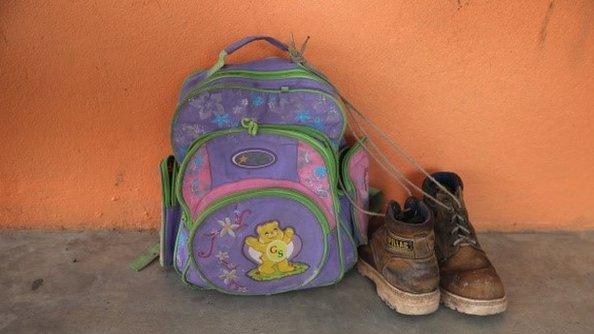Migrant caravan: What is it and why does it matter?
- Published
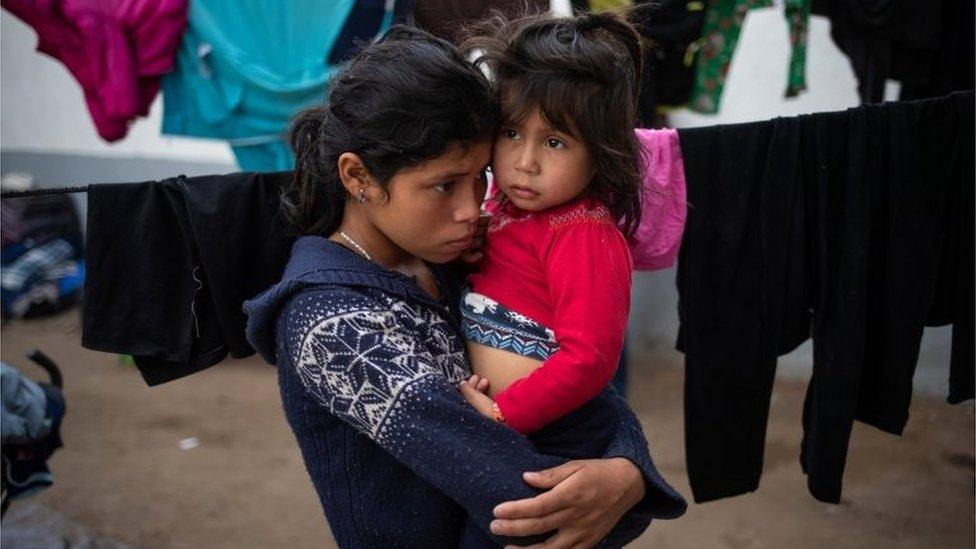
Many of the migrants took their children with them on the trek
Thousands of migrants have arrived at the US-Mexico border after travelling more than 4,000km (2,500 miles) from Central America.
They say they are fleeing persecution, poverty and violence in their home countries of Honduras, Guatemala, and El Salvador.
Many of them say their goal is to settle in the US despite warnings by US officials that anyone found entering the country illegally will face arrest, prosecution and deportation.
Where are they now?
More than 7,000 Central American migrants have arrived at the US-Mexico border after crossing Mexico and parts of Central America, according to official figures released by the Mexican Interior Ministry. They are staying in temporary shelters in the border cities of Tijuana and Mexicali.
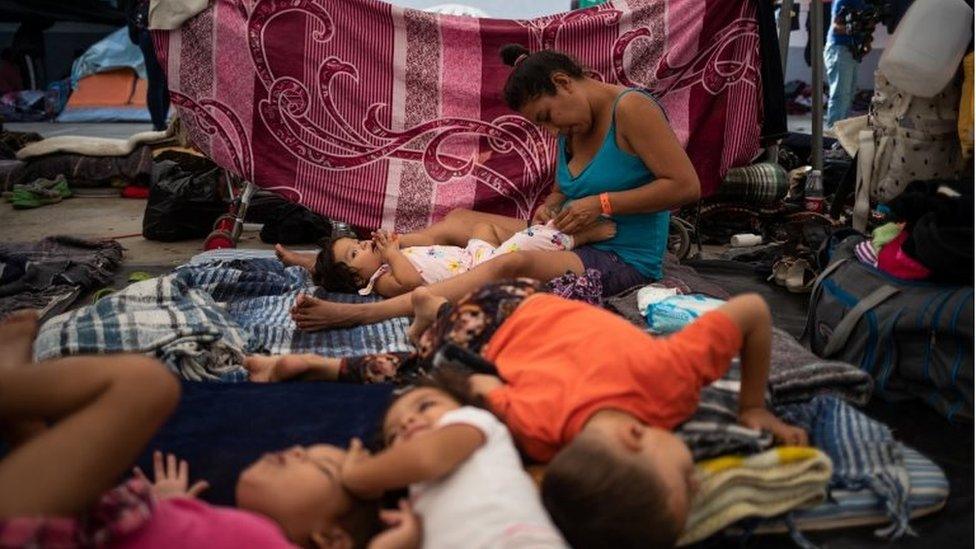
The migrants have been given shelter, but Tijuana's mayor has warned that the city will not be able to provide for them for long
Those now in Tijuana are part of a migrant caravan which left the crime-ridden Honduran city of San Pedro Sula on 13 October. The group, made up mainly of Hondurans, was joined along the way by other migrants from Guatemala and El Salvador.

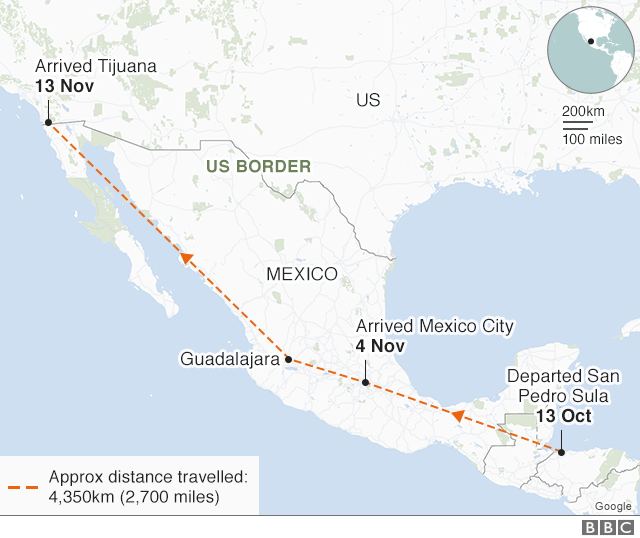

There are also other smaller groups of migrants which have not yet reached the US border. More than 400 are in a shelter in Mexico City and more than 250 are in the northern Mexican state of Sinaloa.
There are also four groups of Salvadoreans who have left their home country since the end of October. They are in different parts of Guatemala and Mexico, heading towards the US border.
In total the number of migrants expected to reach the border is predicted to reach 10,000.
What do they want?
The migrants say they are leaving their respective countries in the hope of building a better future for themselves and their families.
Some say they have been threatened or extorted by criminal gangs operating in their hometowns. Many are travelling with their children whom they do not want to fall prey to the gangs.
Others hope to get jobs abroad which pay enough for them to send money to their relatives who stayed behind.
Many say their dream is to reach the US. Some of them have relatives there already whom they hope to join, others have chosen it as their destination because they think they will earn higher salaries there than in Latin America.
What has been the US reaction?
Long before the first members of the caravan reached the US border, President Donald Trump labelled the migrant caravan as "an invasion".
Ahead of the mid-term elections in the US, he tweeted dozens of time about the migrants alleging that "many gang members and some very bad people are mixed into the caravan heading to our southern border" and warning that "our military is waiting for you".
Trump and the facts about the migrant caravan
On 2 November, just days before the mid-terms, he told voters at a rally that "if you don't want America to be overrun by masses of illegal aliens and giant caravans, you'd better vote Republican".
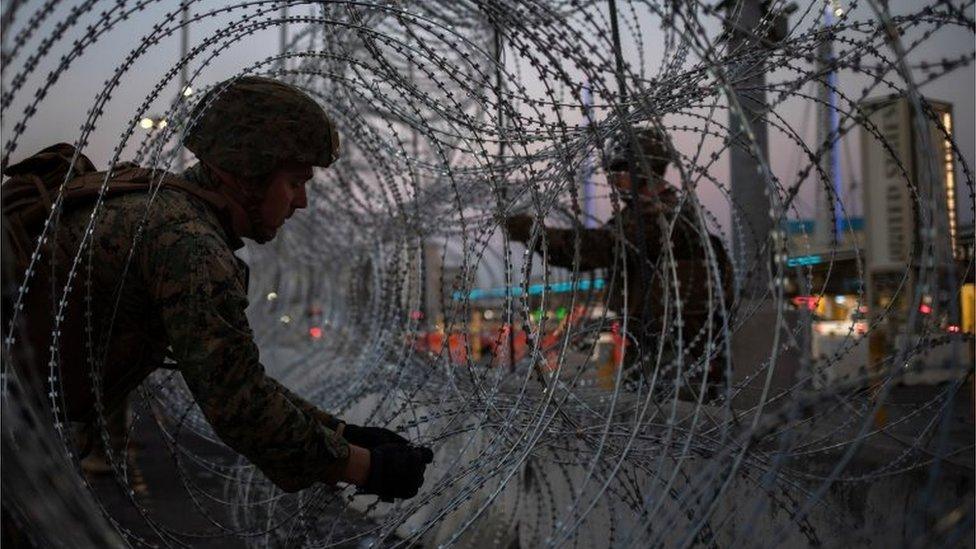
Concertina wire has been strung across parts of the border to fortify it
He also deployed about 5,800 troops to the southern border to "harden" it, including adding concertina wire to some stretches of the border fence, a photo of which he tweeted on 19 November.
Allow X content?
This article contains content provided by X. We ask for your permission before anything is loaded, as they may be using cookies and other technologies. You may want to read X’s cookie policy, external and privacy policy, external before accepting. To view this content choose ‘accept and continue’.

Mr Trump also issued an order denying the possibility of asylum to migrants crossing the southern border illegally - but that order has since been halted by a US federal judge.
The US authorities also briefly closed the San Ysidro port of entry to "restrict access to a large group attempting to run through the border crossing".
On 20 November. US Homeland Security Secretary Kirstjen Nielsen warned that "this administration will not tolerate frivolous asylum claims or illegal entry".
What are the migrants' options?
The migrants who have reached Tijuana are considering their options. Most of them set off with the plan of reaching the US and many say they will claim asylum there.
Isaac's journey from Honduras to the US is made even harder by his disability (November 2018 report)
There is a legal obligation to hear asylum claims from migrants who have arrived in the US if they say they fear violence in their home countries.
Those seeking asylum must be fleeing due to a serious fear of persecution. Under international law, these are considered refugees.
If an asylum seeker enters the US illegally, they are still entitled to a hearing of their claim.
But those seeking a better quality of life - even if they are fleeing devastating poverty - are not considered refugees and do not have the same protections.
The alternative is to stay in Mexico. Outgoing Mexican President President Enrique Peña Nieto has said that those wanting to stay would be welcome and offered jobs, providing they agreed to register and comply with Mexican laws.
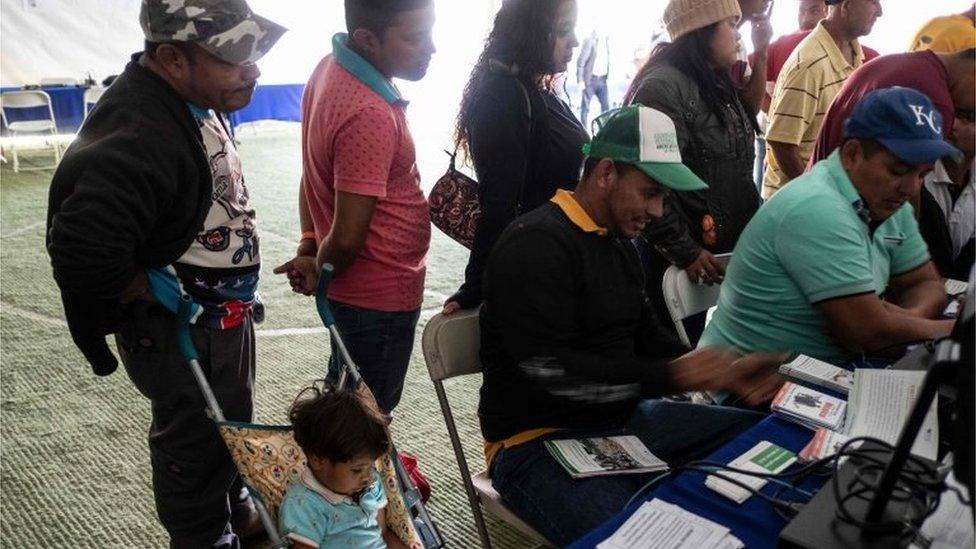
Some of the migrants have registered and queued at an employment fair to sign up for work
Some migrants have also returned to their places of origin. According to the latest figures provided by Honduran officials, 7,000 Hondurans have turned back during their trek north and returned to Honduras.
Some Hondurans have cast doubt on this figure but Director of Honduras's National Institute of Immigration Carolina Menjivar has insisted that it is accurate.
How have they been treated along the way?
When the migrants first crossed from Guatemala into Mexico, they were stopped by riot police at the bridge separating the two countries. After an at times tense stand-off, the police let them through.
Many of the Mexican towns where the migrants stopped along the way offered them shelter, food and water. Volunteers dropped off shoes and clothes and cooked meals. A number of musicians, some famous, others less so, also turned up at the camps to entertain the migrants and lorry drivers offered lifts.
But in Tijuana, hundreds of people protested against their arrival holding up signs reading "no to the invasion".
Anti-migrant protesters clashed with a pro-migrant demonstrator in the Mexican city of Tijuana
Why did they form a caravan?
Honduras, which has a population of about nine million, has endemic problems with gang violence, drug wars and corruption. The wider region has one of the highest murder rates in the world.
While Central Americans have long fled their homelands for the US and have sometimes joined forces along the way, the organised nature of this caravan is relatively new.
Migrants are often kidnapped by people traffickers and drugs gangs which force them to work for them. A large group such as this one is harder to target and therefore offers more protection.
- Published21 November 2018
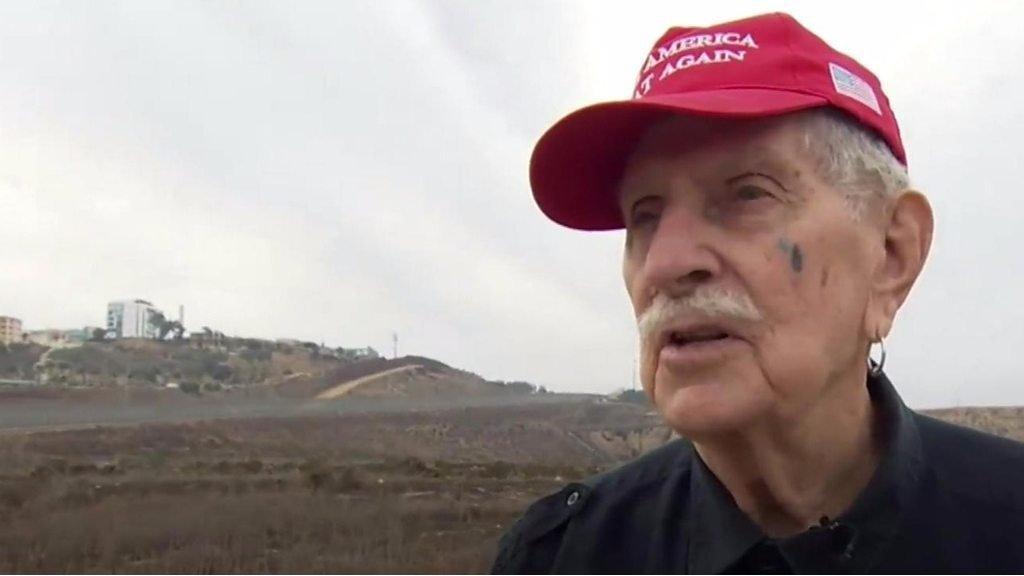
- Published19 November 2018

- Published19 November 2018
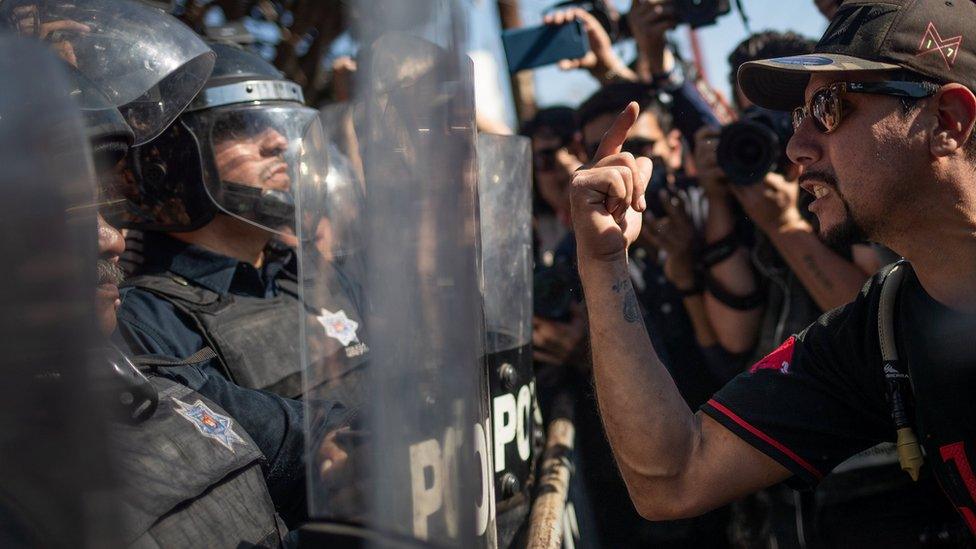
- Published14 November 2018
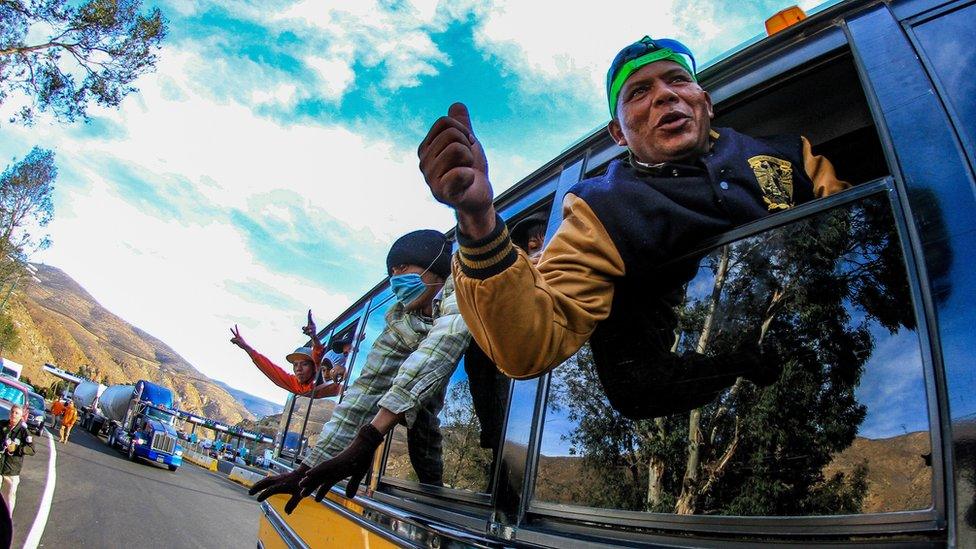
- Published23 October 2018
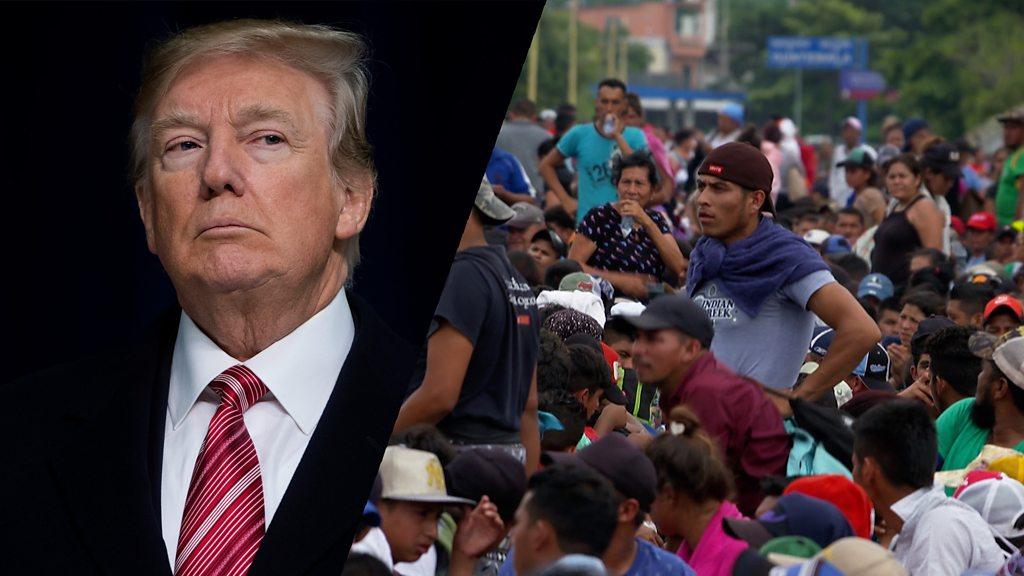
- Published22 October 2018
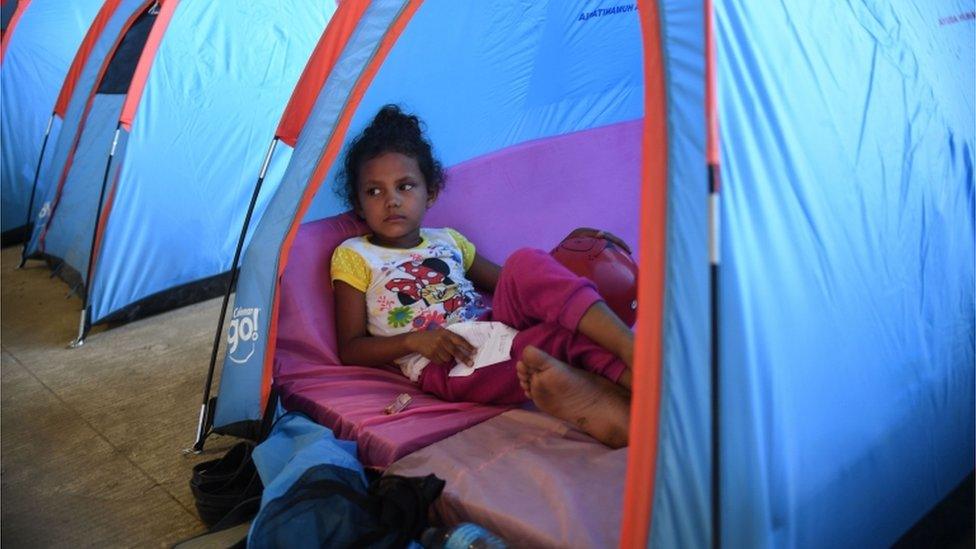
- Published21 October 2018

- Published24 October 2018
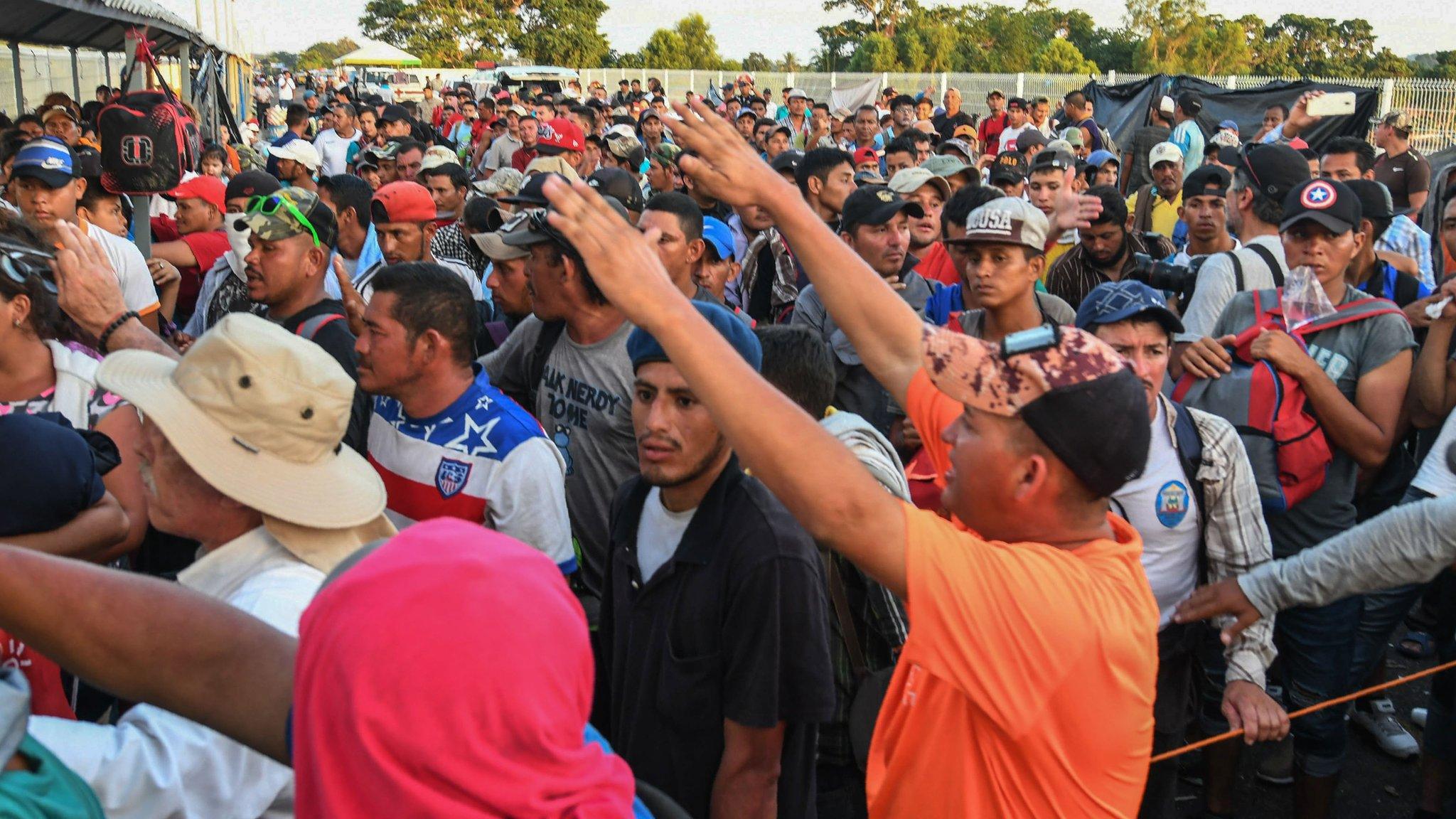
- Published18 November 2016
